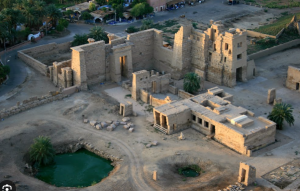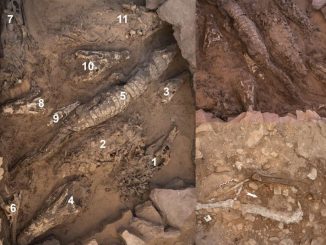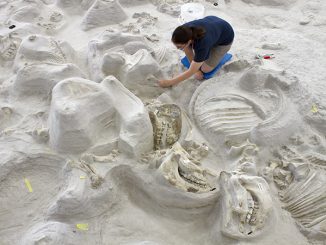Unveiling the Legacy of Ramesses III
Nestled on the west bank of the Nile, opposite the ancient city of Thebes, lies one of Egypt’s architectural marvels—the Mortuary Temple of King Ramesses III at Medinet Habu. This temple complex, a sanctuary of the dead and a monument to one of Egypt’s last great pharaohs, stands as a testament to the grandeur and complexity of Egyptian civilization. As we delve into the history and significance of this ancient structure, we invite our readers to explore the images that capture its timeless majesty.
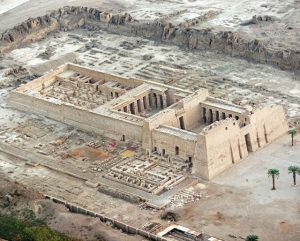
Architectural Splendor and Historical Significance
The Mortuary Temple of Ramesses III is a sprawling complex that encompasses not only the pharaoh’s tomb but also a series of chapels, temples, and administrative buildings. Constructed with the dual purpose of serving as a funerary site and a temple to the god Amun, it is a masterpiece of ancient architecture. The temple’s walls are adorned with intricate reliefs and inscriptions that depict the victories of Ramesses III over his enemies, as well as daily religious and ceremonial life in ancient Egypt.
The images of the temple’s majestic facades, towering columns, and detailed carvings provide a visual feast that brings to life the stories of ancient battles, divine worship, and the pharaoh’s achievements. These visual narratives are invaluable resources for historians and archaeologists, offering insights into the political, religious, and social dynamics of the time.
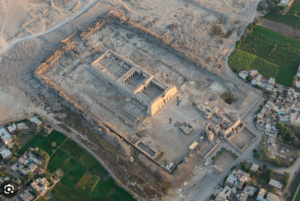
The Temple as a Cultural and Religious Hub
Beyond its function as a mortuary temple, Medinet Habu was a center of economic, cultural, and religious activity. The complex housed priests, workers, and artisans, and played a pivotal role in the local economy through its estates and agricultural lands. The temple’s significance extended beyond the lifetime of Ramesses III, remaining an important religious site for centuries.
The photographs of the temple’s interiors and exteriors reveal the extent of its role as a hub of activity. They show not just a place of reverence for the deceased king and the gods, but also a living, breathing center of ancient Egyptian society. This dual nature of Medinet Habu as both a tomb and a temple underscores the Egyptian belief in the interconnectedness of life, death, and divinity.

Preserving the Echoes of the Past
The preservation of Medinet Habu is crucial for our understanding of ancient Egyptian civilization. Each stone, statue, and carving is a piece of history, offering insights into the life and times of Ramesses III and the people who lived in his era. The ongoing efforts to conserve and study the temple complex ensure that this cultural heritage remains accessible for future generations to learn from and admire.
As we reflect on the images of Medinet Habu, we are reminded of the importance of ancient discoveries in shaping our understanding of human history. The temple not only serves as a monument to the achievements of Ramesses III but also as a bridge connecting the modern world with the ancient. It challenges us to appreciate the complexities of past civilizations and to recognize the enduring legacy of their contributions to art, architecture, and culture.
In conclusion, the Mortuary Temple of King Ramesses III at Medinet Habu is a remarkable artifact of ancient Egyptian civilization. Its architectural splendor, historical significance, and role as a cultural and religious hub offer a fascinating glimpse into the past. As we continue to explore and preserve such ancient discoveries, we ensure that the stories, beliefs, and achievements of our ancestors remain a vibrant part of our collective memory.
